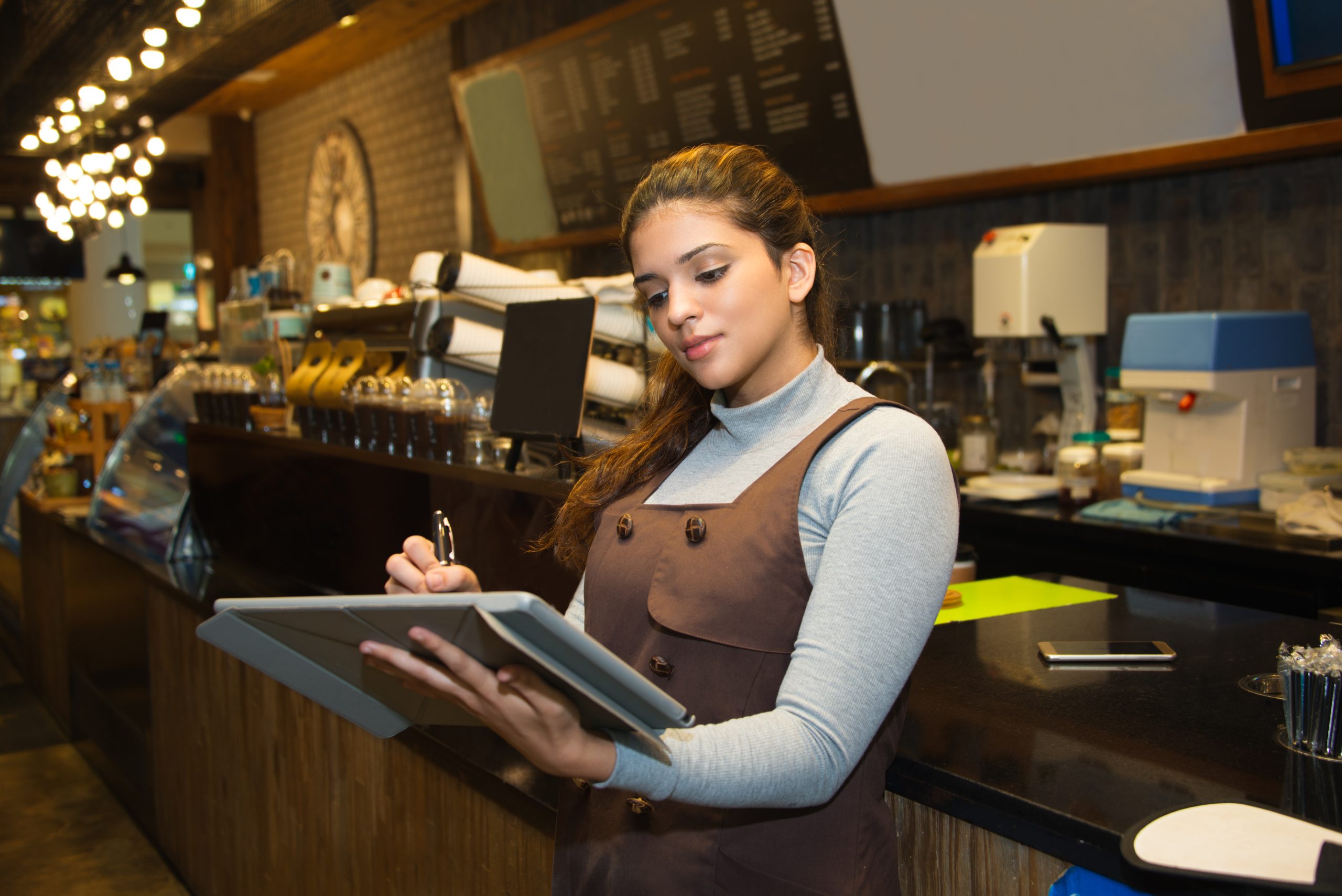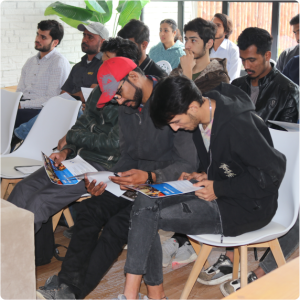TOP 5 POS FEATURES TO HAVE IN YOUR SYSTEM (2024)

When it comes to running a restaurant, keeping up with the speed of business is of vital importance. From managing orders to keeping track of sales, a good Restaurant Point of Sale (POS) system is your all-in-one answer to making restaurant management smoother.
From managing multiple locations to improving order accuracy, a modern POS system can make or break your restaurant’s efficiency. But what features should you prioritize when choosing a POS system for your business?
Therefore, let us discuss the extent of top 5 features you should consider when you come to get your personalized POS system tomorrow!
1. Cloud-Based POS for Ideal Flexibility
One of the most crucial elements of a modern POS is cloud-based technology. The days of relying on a clunky, manually-operated, outdated systems that require specific on-site maintenance and accessibility are long in the past. Unlike such on-site systems, cloud-based POS allows restaurant owners and managers to access their POS data from anywhere, at any time, on any device. This flexibility makes managing operations more convenient and efficient, especially for multi-location businesses or owners who need to monitor their restaurant on the go.
Benefits of a Cloud-Based POS:
- Remote Access: Monitor inventory levels, employee performance, and sales without having to physically be at the restaurant.
- Autonomous Software Updates: Cloud based systems are regularly upgraded in the background, while ensuring you ‘live’ updates on the go. Many of these updates are provided with latest features and security enhancements.
- Data Security & Backup: It goes without saying the whole purpose of cloud based systems would be that your cumbersome data is safe and constantly backed up, giving you the ideal protection from data loss; incase of hardware failures.
Why It Matters
Imagine having real-time access to your sales performance while traveling or working remotely. A cloud-based POS empowers you to stay connected to your business no matter where you are, providing peace of mind and greater control over your operations.
2. Real-Time Reporting and Analytics
A modern POS system should not only process transactions but also offer deep insights into your restaurant’s performance. Real-time reporting and analytics are critical for understanding how well your business is doing on any given day or over a longer period.
With real-time data, restaurant owners can track everything from sales trends and customer preferences to staff performance and inventory levels. This feature is crucial for making data-driven decisions that can improve profitability and operational efficiency.
Key Metrics to Track:
- Sales Trends: Identify which menu items are selling well and which ones need to be re-evaluated or promoted.
- Labor Costs: Monitor staff productivity to ensure you’re maximizing efficiency and not overstaffing during slow periods.
- Inventory Levels: Align your inventory orders with actual sales data to minimize waste and avoid running out of key ingredients.
Why It Matters
Having access to real-time reports allows you to make timely adjustments to improve profitability, whether it’s tweaking your menu, reassigning staff, or adjusting inventory orders. With these insights, you’re always equipped to make informed decisions for your restaurant.
3. Multi-Location Management for Ambitious Restaurants
For restaurant chains or businesses with plans to expand, managing multiple locations can be overwhelming without the right technology. A POS system that offers multi-location management enables restaurant owners to control operations across all locations from a single dashboard.
This feature allows for seamless updates to menus, pricing, and promotions across all outlets, ensuring consistency in operations. Additionally, multi-location POS systems offer consolidated reporting, allowing you to compare performance between different branches.
Key Features of Multi-Location POS:
- Centralized Menu Management: Update menus, promotions, or pricing across multiple locations with ease.
- Inventory Control: Track and transfer inventory between branches to ensure that stock levels are optimized.
- Branch-Specific Reporting: Access performance reports for each location or consolidate data for a comprehensive view of your entire business.
Why It Matters
If you’re managing multiple locations, a multi-location POS simplifies your workload. It allows you to standardize operations across all your restaurants while still providing detailed insights into each branch’s performance.
4. Customer Relationship Management (CRM)
Maintaining a strong relationship with your customers is essential to a restaurant’s success. A Customer Relationship Management (CRM) system integrated into your POS allows you to store and analyze customer data, such as dining preferences, order history, and contact details. This data can then be used to personalize customer interactions, reward loyalty, and drive repeat business.
Key CRM Features:
- Customer Profiles: Store important information like contact details, birthday dates, favorite orders, and past interactions.
- Loyalty Programs: Automatically track customer purchases and reward repeat visits with discounts or special offers.
- Targeted Marketing: Use customer data to create personalized marketing campaigns that target specific groups based on their buying behavior.
Why It Matters
A well-integrated CRM system helps you build deeper connections with your customers. By offering personalized experiences and rewards, you encourage customer loyalty, which increases retention and generates consistent revenue over time.
5. Tableside and Mobile Ordering
With the rise of mobile technology, customers expect faster, more efficient service. Tableside and mobile ordering allow servers to take orders directly at the table using mobile devices, sending orders instantly to the kitchen. This feature improves accuracy, reduces wait times, and enhances the overall customer experience.
Additionally, mobile ordering options provide customers with the convenience of placing orders themselves via a mobile app or online platform, especially for takeout or delivery orders.
Advantages of Tableside Ordering:
- Order Accuracy: By eliminating manual input, tableside ordering reduces errors between servers and the kitchen.
- Faster Service: Orders are sent directly from the table to the kitchen, speeding up the preparation process.
- Mobile Payments: Customers can pay from their table, speeding up checkout times and creating a more seamless experience.
Why It Matters
In a world where convenience is king, tableside and mobile ordering streamline operations, increase accuracy, and boost customer satisfaction—all while enhancing the dining experience.
Conclusion:
It is crucial to give top priority to features that increase productivity, promote customer satisfaction, and provide data-driven insights when selecting the best point-of-sale (POS) system for your restaurant. More than just a cash register, a point-of-sale (POS) system ought to be a full-featured management tool that enables you to make wise decisions, optimize processes, and expand the scope of your business.
All of these essential functions and more are included in the whole point-of-sale system that ServeEasy provides. Our real-time reporting gives you the information you need to succeed, and our cloud-based point-of-sale (POS) gives you flexibility and peace of mind. Whether you’re managing a single location or several branches, ServeEasy is made to match the demands of contemporary restaurants with its sophisticated multi-location administration, CRM connectivity, and tableside ordering features.
Are you ready to witness ServeEasy’s transformation of your eatery? To schedule a free demo and begin optimizing the operations of your restaurant, contact us right now!


 Cafe & BakeryPopular
Cafe & BakeryPopular Food Truck
Food Truck Quick Service
Quick Service Fine Dining
Fine Dining Hotel Restaurant
Hotel Restaurant Pizzeria
Pizzeria























































